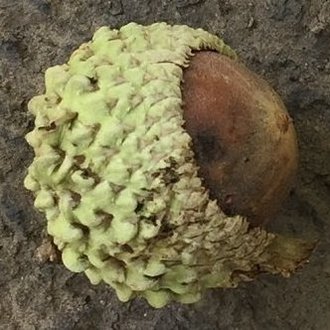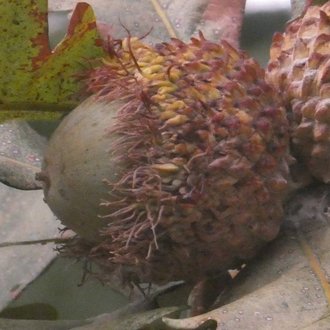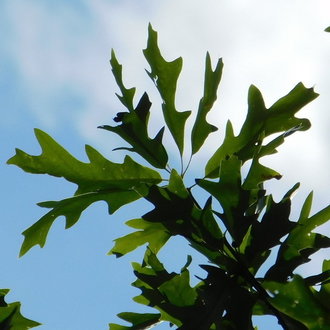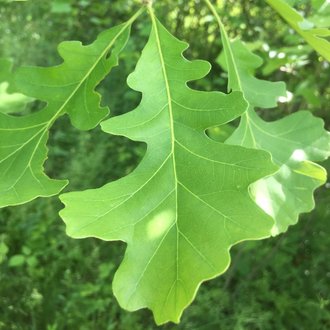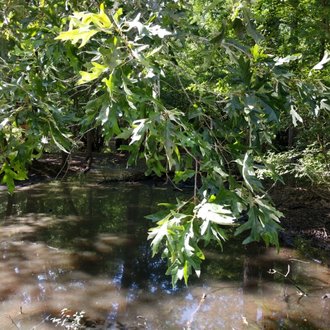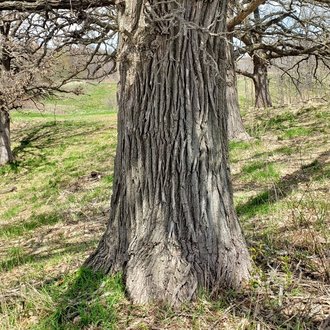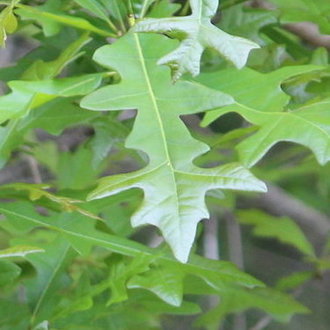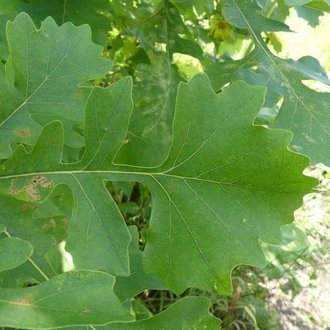Overcup Oak vs Bur Oak
This guide is under construction and has not been published yet. It may have errors. When in doubt, double-check other sources for definitive ID.These two species are easily confused where their ranges overlap; both have acorn cups covering much of the nut, irregular and variable leaf shapes, and can be found in flood-prone bottomlands, although bur oak is also found on much drier sites. They are easily distinguished by the margin of the acorn cap. Some trees can be easily distinguished by leaf shape, but both species are so variable that such distinctions are best made only if you have extensive experience with both species. These species are closely related and can form hybrids and intergrades where they overlap; not all individuals are able to be identified. Overcup oak is found on more acidic soils whereas Bur Oak is more common on limestone-derived soils.
Overcup Oak (Quercus lyrata) | Bur Oak (Quercus macrocarpa) |
An oak of seasonally flooded bottomlands in the southeastern U.S. and Mississippi alluvial plain. | A rugged oak native to North America, with a wide distribution, ranging farther west and north than most oaks that also occur in the east. |
Acorn cap scales do not have long bristles. Photo © Ken Kneidel, Public Domain. | Acorn cap scales have long bristles near the margin of the cap, often curling back creating a "mossy" appearance. Photo © Lisa Winnett-Pequeno, CC BY 4.0. |
Lobe tips may be rounded, but are often unusually pointy for a white oak. Photo © Camden Davis, CC BY 4.0. | Lobe tips more consistently rounded, more typical for white oaks. Photo © askalotl, Public Domain. |
Found only in bottomlands, on sites that flood for greater portions of the growing season than those where other oaks are found. Photo © Alison Northup, CC BY 4.0. | Can be found in bottomlands and on sites that experience flooding, but habitats tend not to experience as prolonged flooding. Also found on much drier sites. Photo © aarongunnar, CC BY 4.0. |
Terminal lobe not much larger than other lobes. Photo © ash2016, CC BY 4.0. | Terminal lobe often much larger than other lobes; sometimes even forms a broad semicircle. Photo © Christian Grenier, Public Domain. |
References & External Resources
These short lists show only links helpful for ID. For a complete list of references and resources also covering other aspects of ecology, visit the links section of the full article on each plant, which is the first entry here.



